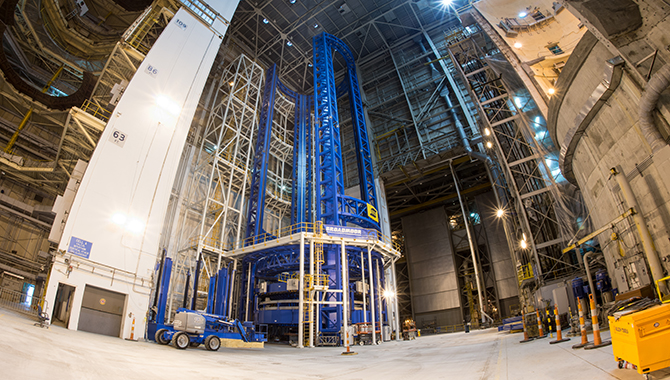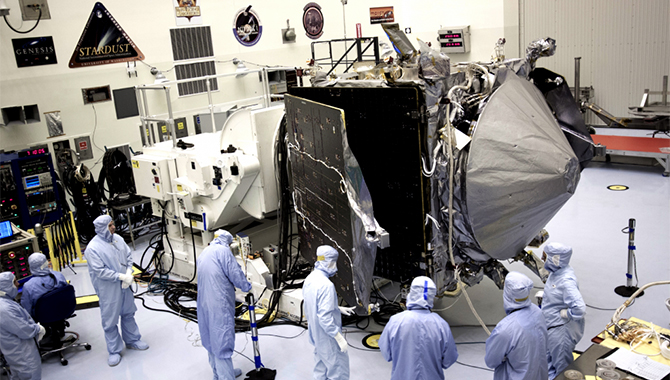
The 170-foot Vertical Assembly Center (VAC) is the world’s largest spacecraft welding tool. It will be used to build the core stage of the SLS.
Photo Credit: NASA
The Government Accountability Office (GAO) calls for NASA to match Space Launch System (SLS) Program resources to requirements to ensure long-term affordability and sustainability.
The SLS Program, established in 2011, supports the development of NASA’s first new heavy lift launch vehicle in more than four decades. Three SLS launch vehicle capabilities, which will be used in conjunction with the Orion Multi-Purpose Crew Vehicle for manned missions beyond low Earth orbit, are planned for development. Initial test flights for the first SLS capability will be conducted in 2017 and 2021.
According to the GAO, progress on the design of the SLS is moving ahead positively. The program has satisfied a number of NASA metrics, including requirements for design maturity. However, the GAO found that NASA has not developed an adequate plan for developing the SLS that matches cost and schedule resources to program requirements. Typically, NASA policy is to develop an executable business case at the 70 percent confidence level, which indicates a 70 percent likelihood that the program will be completed at or under budget and on schedule. The fact that this has not yet been done for the SLS is a concern because matching resources to requirements is considered a best practice indicative of success. The GAO has also identified a potential shortfall in funding for the SLS and concerns about an abbreviated development schedule for a core component. In addition, the GAO cited a potential gap between the integration of legacy systems from the Space Shuttle and Constellation programs into the SLS design and the need to incorporate new technologies as well.
The SLS is a cornerstone of future NASA crewed missions beyond low Earth orbit. Funding for the SLS represents a significant part of NASA’s budget for major projects as well as government-wide launch-related and development funding over the next few years. However, the particular missions that SLS will support have not yet been specified, making it difficult to estimate the program’s lifecycle costs. Therefore the GAO recommends that NASA do the following:
- Develop a plan, at the 70 percent confidence level, to match resources with requirements for the initial SLS capability through its first test flight.
- Identify potential missions for each of the SLS capabilities, including a plan for funding within NASA’s proposed budget.
- Designate any variant of the SLS Program that exceeds $250 million in proposed cost as a separate major project in order to streamline project assessment.
- Conduct a competitive procurement process, as appropriate, for all SLS capabilities in order to promote affordability.
The GAO noted that taking these four actions should decrease the risk of program cost or schedule growth.









